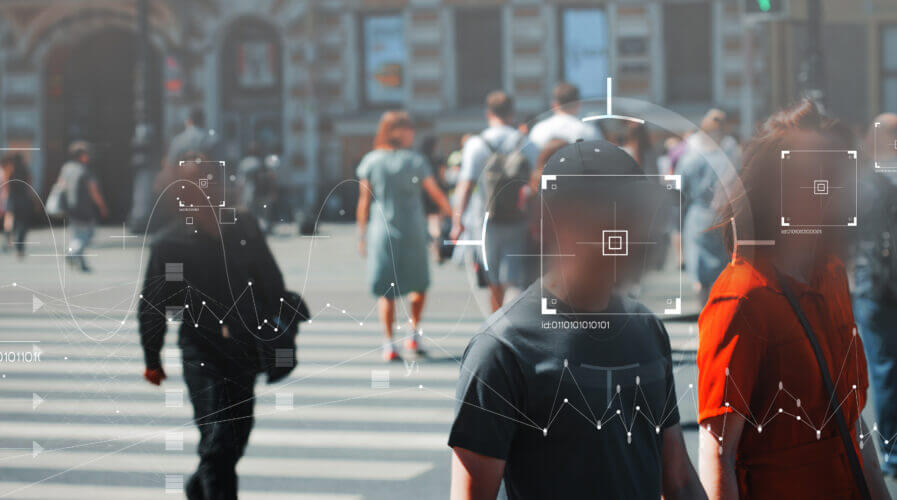
(Source – Shutterstock)
Intelligent video will fast-track smart cities of the future, but comes with great responsibility
Article by Malou Toft, Vice President, Asia Pacific, Milestone Systems
The concept of smart cities is no longer a stranger to many. To improve the quality of life for millions of people throughout the world, many nations have already started using smart technology to address city-wide issues including inefficiencies in transportation and energy.
One solution has emerged as a guardian of cities, keeping its residents safe, secure, and away from danger – Video technology. From traffic cameras that analyze historic traffic patterns to smart street lampposts that understand crowd behavior, video technology has been used over the years to enhance public safety and promote situational awareness. It has also advanced over time, becoming more intelligent, and its uses have expanded beyond security, being used across varied industries such as education, hospitality, and smart cities.
Intelligent video technology – a gateway to the future
Today, intelligent video technology is able to collect massive amounts of data in the form of moving images and sound. Paired with emerging technology, video technology is also capable of analyzing the data collected and providing users with insights beyond the capabilities of legacy, rule-based analytics systems. We’ll soon see it adopt new technologies to scale its capabilities and chart new ways of living for our society, proving its usefulness across industries beyond security.
- Enhancing critical care for patients in the healthcare industry – Intelligent video technology has been used as a diagnostics and drug monitoring tool to enhance critical care for patients while minimizing the workload for healthcare professionals. Outside of hospitals, intelligent video technology has been used in elderly care to ensure the safety and security of seniors living alone. The technology is equipped with fall and scream detection, which alerts medical personnel whenever an elderly person requires immediate assistance.
- Improved security monitoring capabilities – Advancements in artificial intelligence (AI) have also made it possible for video technology to expand its breadth of capabilities. By analyzing audio and images with AI, video technology can recognize humans, vehicles, objects, and events, and even recognize behavioral patterns and body language, alerting users of any abnormal activity. This is especially useful in identifying suspicious individuals in a crowded center by using data from integrated records of prior misdemeanors.
- Providing insights for improved customer engagement – In combination, Video Management Software (VMS) and AI can enhance customer engagement, elevating overall customer experience in sectors such as retail. For example, VMS software can analyze a customer’s age, gender, and emotion by using deep learning algorithms. With this information, retailers can recommend the areas of greatest interest for each customer based on past data of similar customer profiles.
- Seamless and convenient automated identification – Contactless facial recognition technology will also become commonplace in the future across industries. In the aviation industry, airports have already rolled out facial-recognition systems to verify the identities of passengers. The contactless nature of such technologies is critical in managing crowds in populated areas, ensuring hygienic transactions without cross-contamination, and managing the efficiency of new arrivals given the resumption of travel.
Using video technology responsibly for humanity

Malou Toft, Vice President, Asia Pacific, Milestone Systems
Looking ahead to 2023, there needs to be greater emphasis on the responsible use of intelligent video technology. Companies need to reflect and reassess their purpose; where do their commitments lie – in accelerating the growth of smart cities at the expense of humankind, or in balancing growth alongside our responsibility for the greater good?
Organizations need to recognize that their responsibility towards society comes first. In other words, people first. Organizations have an obligation to society to use technology to serve the greater good of humankind and not use it purely as a profit generator. Simple steps such as encouraging employees and partners to adopt best practices in the responsible use of technology could make a difference in influencing the rest of the industry to follow suit and create a foundation for the responsible use of video technology to flourish.
Other possible steps include:
- Creating a responsible innovation program to apply responsible technology principles to product development.
- Training your sales organization and business partners on responsible technology principles.
- Incorporating responsible technology principles in the due-diligence process for business transactions.
As we journey into a future in which video technology could be a part of everyday life, there will be many more promising possibilities. To realize the benefit of those possibilities, for current and future generations, we must implement this great technology the right way – responsibly.
The views in this article is that of the author and may not represent the views of Tech Wire Asia
READ MORE
- The criticality of endpoint management in cybersecurity and operations
- Ethical AI: The renewed importance of safeguarding data and customer privacy in Generative AI applications
- How Japan balances AI-driven opportunities with cybersecurity needs
- Deploying SASE: Benchmarking your approach
- Insurance everywhere all at once: the digital transformation of the APAC insurance industry


